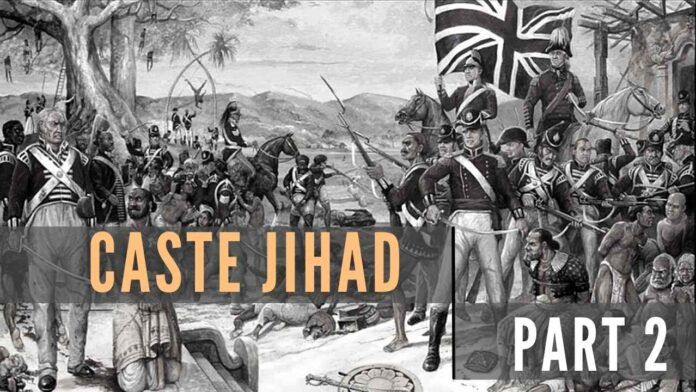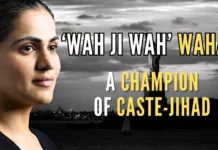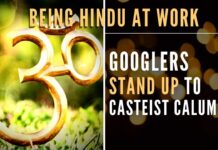
The previous part of the article can be accessed here. This is the second part.
Census and caste in the colonial era
In part 1, we noted about the census used by the British empire as an instrument and a political phenomenon that included mutually exclusive ethnic, religious, racial, and caste groups and divided people by geographical boundary. Here, we discuss the major architects of census starting late 1800s when the constructs of castes and subcastes got solidified during the colonial era. The historical context presented below is derived primarily from two sources and the references therein [1][2].
We assume that the census was a well-meaning exercise by the Britishers but its implementation was poor for many reasons. For example, the colonizers themselves did not understand the people of India and thus the questions asked during the census were not well articulated. Arguably, people in rural areas may have poorly understood the questions and self-identified to belong to a caste or sub-caste based on their occupation and/ or brotherhood. It cannot be ruled out that those conducting the census (mostly upper-class Indians) used their own bias and classified people in the given caste and/ or race.
Undoubtedly, the census was a tool to assign people to different social categories affecting their privileges and place in society. Thus, people were contesting to move upward from the “lower” class. For example, the 1921 census was conducted using a category of “depressed class,” resented and contested by many. This is the period of people being more united and challenging British rule (Gandhi had already returned to India). Consequently, the “depressed” category was dropped in the 1931 census and replaced by “exterior” castes with little clarity. The whole system was in constant flux and perhaps it is safe to suggest the census and the caste hierarchical classification continued with little clarity.
It is worth noting that the conversion practices from Hindus to Muslims during the Mughal empires and then to Christianity during the colonial times meant that both the Muslims and Christians of India continued to identify themselves in a particular caste and/ or race. In other words, the caste nomenclature changed with religion but the caste system is not limited to only Hindus as it is perceived in modern society. The British empire, motivated by their desire to control the challenging, complex, and large India, used the census as a tool to divide the majority Hindus leading to the convoluted caste system.
Reportedly, the caste and religious categories were part of the census from the beginning and initially, the caste was equated with class[1]. Later, the sect and tribe were included in the census. In fact, the Scheduled caste (SC) and Scheduled Tribe (ST) became the permanent fixtures of India’s caste system and continue to date. While attempts continued to understand and distinguish between caste, tribe, race, and religion, those categories remained most pervasive and distinct.
It seems that Herbert Risley was the first anthropologist responsible for the census in British India who later authored the monumental book based on his racial theory of caste, “The People of India[2].” This was later criticized and discredited by his contemporary William Crooke. However, the fact remains that Risley and Crooke were the first to publish two handbooks in the 1890s with a lengthy ethnographic glossary with entries for individual tribes and castes. Those handbooks shaped the hierarchical caste system which continues to date in modern India. Later, J H Hutton looked after the census and authored another book, Caste in India: Its Nature, Function, and Origins first published in 1946.
Risley’s caste-jihadism is reflected in his argument that the ultimate origin of caste lay in the hierarchical distinction between the ‘higher’, ‘fair-skinned Aryan’ and the ‘lower’, ‘black Dravidian’, and that the evolution of the division of labor could not adequately explain the system. The data in both handbooks included references to current cast nomenclatures like the Kayastha and Chamar and many subcastes with regional differences. Kayasthas belong to Vaishya varna and Chamars to the Shudras, to the best of my understanding. However, the latter is part of the untouchables, once called Harijan by Gandhi and now part of the so-called Dalits.
In fairness to Risley and Crooke, the descriptions of tribes and castes including traditions, physical characteristics, marriage customs, religion, occupation, social status, and population figures were largely a mixture of their elitist views and the feedback of their assistants on the ground (upper-caste Indians) who conducted surveys? As stated earlier, their own bias colored what they heard, perceived, and finally reported. Thus, the colonial definitions of caste constructs and social change in Hindu majority India cannot be totally ascribed to British jihadism because the natives contributed to the census.
What may seem an oversimplification, the caste system was created by the colonizers with European thought (or White supremacist male view) with ground facts (however distorted they may be) by Indians. It may be safe to suggest that the elitist view of the colonizers was shaped by both European and indigenous thought. It should be noted that only men, Britishers or Indians, were involved in the census and caste hierarchy, indicating the women suppression in 1800s colonial India.
While the caste narratives were constantly evolving through many censuses over time, India’s prominent reformers like Swami Vivekananda (1863-1902), Gopal Krishna Gokhale (1866-1915), and Swami Dayananda (1824-1883) were active in social causes and religious reforms. The next article in this series will discuss how two of India’s eminent statesmen, Gandhi, and Ambedkar, tried to change the cast narrative, particularly, as it relates to the “Dalits.” That will be followed by the caste hierarchy dominating independent India’s political scene and finally the emergence of the Dalit issue in the United States, a major topic of discussion of this series.
To be continued…
Note:
1. Text in Blue points to additional data on the topic.
2. The views expressed here are those of the author and do not necessarily represent or reflect the views of PGurus.
References:
[1] Census, Politics and Construction of Identities in India – ResearchGate
[2] Ethnographic inquiry in colonial India: Herbert Risley, William Crooke, and the study of tribes and castes – AC UK
PGurus is now on Telegram. Click here to join our channel and stay updated with all the latest news and views
For all the latest updates, download PGurus App.
- Education and election in Bharat: Race to the top - April 16, 2024
- Kejriwal: “An Insignificant Man” or a corrupt politician with impending prison term - March 24, 2024
- Bharat’s general elections and the Model Code of Conduct - March 22, 2024











The Kayastha is a Forward High class community in Pan India & In the history this community also had several kings & small kingdoms in some parts of india as Kashmir, Bengal & Orissa.Since emerging as a new fifth hindu varna in the time of Gupta period, the main work of Kayastha was the Government administration, Ministers, zamindars, revenue department, record keeping & soldiers.A very Famous kayastha king was Lalitaditya Muktapeed & Maharani didda of Naag Karkotak Kayastha vansh of Kashmir.Saksena Kayasthas were played an important role in Kashmir king’s army & called Sakhi-Sena {Sakh-sena}.The invasion of many foreign clans in india from various parts of Eurasia & after muslims like Mangols & Mughals invasion, kayasthas lost their small kingdoms & faded their identity as kshatriya. In the long Mughal & later period kayastha worked in the administration & other works as they did before but lost their reigns. Raja Todarmal, the Navratna of Akbar is also considered as Kayastha.After Mughals in the British raj kayastha legacy in adminstration continued & post the industrial development they worked hard in new fields. Kayastha community is secular by nature & has less population comparison to some other influential castes therefore, it doesn’t work like a Vote bank.In British Raj & after Independence kayastha is classified in Kashatriya varna & it is considered to be more of a Hindu community than a vaidik varna.
Dear Vijendra Ji,
Greetings to you! I thank you so much for taking the request into consideration; it is certainly your erudition and inexplicable wisdom.
I am going to try my best to cast light on my research with a few references in connection with different groups of Kayasthas across the country.
According to Christian Novetzke, in medieval India, Kayastha in certain parts were considered either as Brahmins or equal to Brahmins (1). Several religious councils and institutions have subsequently stated the varna status of Chitraguptvanshi Kayasthas to be Brahmin and CKPs as Kshatriya (2) (3) (4)
The Allahabad High Court ruled in 1890 that Kayasthas were Kshatriyas (5). In post-Raj assessments, the Bengali Kayasthas, alongside Bengali Brahmins, have been described as the “highest Hindu castes” (6).
In eastern India, Bengali Kayasthas are believed to have evolved from a class of officials into a caste between the 5th/6th centuries and 11th/12th centuries, its component elements being putative Kshatriyas and mostly Brahmins. They most likely gained the characteristics of a caste under the Sena dynasty.[7] According to Tej Ram Sharma, an Indian historian, the Kayasthas of Bengal had not yet developed into a distinct caste during the reign of the Gupta Empire, although the office of the Kayastha (scribe) had been instituted before the beginning of the period, as evidenced from the contemporary Smritis.
Sharma further states:
Noticing brahmanic names with a large number of modern Bengali Kayastha cognomens in several early epigraphs discovered in Bengal, some scholars have suggested that there is a considerable brahmana element in the present day Kayastha community of Bengal. Originally the professions of Kayastha (scribe) and Vaidya (physician) were not restricted and could be followed by people of different varnas including the brahmanas. So there is every probability that a number of brahmana families were mixed up with members of other varnas in forming the present Kayastha and Vaidya communities of Bengal.[8]
Modern scholars list them among Indian communities that were traditionally described as “urban-oriented”, “upper caste” and part of the “well-educated” pan-Indian elite, alongside Punjabi Khatris, Kashmiri Pandits, Parsis, Nagar Brahmins of Gujarat, Chitpawans and CKPs (Chandrasenya Kayastha Prabhus) of Maharashtra, South-Indian Brahmins including Deshastha Brahmins from Southern parts of India and upper echelons of the Muslim as well as Christian communities that made up the middle class at the time of Indian independence in 1947.[9]
Chandraseniya Kayastha Prabhu (CKP) is an ethno-religious caste of South Asia. Traditionally, the CKPs have the upanayana (thread ceremony) and have been granted the rights to study the vedas and perform vedic rituals along with the Brahmins.[10] Ritually ranked very high, the caste may be considered socially proximate to the Maharashtrian Brahmin community. They have traditionally been an elite and literate but a numerically small community. [11]
During the times of the Shilahara dynasty of Konkan (around the 10th century), the Silhara kings were known to invite for settlement into their lands, Brahmins and Kshatriyas of the northern Indo-Gangetic valley. These are the Goud Saraswat Brahmin and the CKP.[12] In fact, epigraphical evidences i.e., engravings from the Shilahara times have been found in Deccan to prove that many CKPs held high posts and controlled the civilian and military administration. For example, a Shilahara inscription around A.D. 1088 mentions the names of a certain Velgi Prabhu. Lakshmana Prabhu is mentioned as a MahaDandanayaka (head of military) and MahaPradhana (prime minister); Ananta-Prabhu is mentioned as a MahaPradhana (prime minister), Kosadhikari (Head of treasury) and Mahasandhivigrahika (charge of foreign department). According to Historian and researcher S.Muley, these epigraphs might be the first available evidences of the existence of the CKP in Maharashtra.[13]
From the eleventh-century onwards, epigraphical texts mention various regional lineages belonging to the North Indian branch of the Kayasthas,[14] which were identified with their common occupational specialization and whose members had become particularly influential in the administration of mediaeval kingdoms.[15] Some Kayasthas even had feudatory status; some had received the title of Pandita for their extensive knowledge, while others, who were financially well-off, commissioned construction of temples.[16]
Soḍḍhala, the author of the eleventh-century Sanskrit work Udayasundarī Kathā, called himself a Vālabhya-Kayastha while also claiming to be a Kshatriya (warrior class). The members of this lineage, possibly from Vallabhi, are mentioned as early as ninth-century in the epigraphs of the Rashtrakuta king Amoghavarsha.[17]
1. Novetzke, Christian Lee (2016). The Quotidian Revolution: Vernacularization, Religion, and the Premodern Public Sphere in India. Columbia University Press. p. 159. ISBN 9780231175807.
2. Shukla, Indrajit (2016). Loka Shasak Maha Kal Chitragupta Tatha Cha Brahma Kayastha Gaud Brahmana. Gorakhpur: Sanatan Dharm Trust.
3. K. P. Bahadur, Sukhdev Singh Chib (1981). The Castes, Tribes and Culture of India. ESS Publications. p. 161.
4. Harold Robert Isaacs (1970). Harry M. Lindquist (ed.). Education: readings in the processes of cultural transmission. Houghton Mifflin. p. 88.
5. Bellenoit, Hayden J. (2017). The Formation of the Colonial State in India: Scribes, Paper and Taxes, 1760–1860. Taylor & Francis. pp. 173–176. ISBN 978-1-134-49429-3.
6. Inden, Ronald B. (1976). Marriage and Rank in Bengali Culture: A History of Caste and Clan in Middle Period Bengal. University of California Press. p. 1. ISBN 978-0-520-02569-1.
7. Andre Wink (1991). Al-Hind, the Making of the Indo-Islamic World, Volume 1. Brill Academic Publishers. p. 269. ISBN 978-90-04-09509-0. Retrieved 3 September 2011.
8. Sharma, Tej Ram (1978). Personal and Geographical Names in the Gupta Empire. New Delhi: Concept Publishing Company. p. 115.
9. Paul Wallace; Richard Leonard Park (1985). Region and nation in India. Oxford & IBH Pub. Co.
10. Milton Israel and N.K.Wagle, ed. (1987). Religion and Society in Maharashtra. Center for South Asian Studies, University of Toronto, Canada. pp. 147–170.
11. André Béteille (1992). Society and Politics in India: Essays in a Comparative Perspective. Oxford University Press. p. 48. ISBN 0195630661.
12. Raj Pruthi, Rameshwari Devi (2004). Religions And Faiths in India. Mangal Deep Publications. p. 204.
13. S.Muley,M.A.,PhD (1972). Studies in the Historical and cultural geography and ethnography of the Deccan. Deccan College Postgraduate and Research Institute, University of Poona. pp. 301, 303, 304.
14. O’Hanlon, Rosalind (2010). “The social worth of scribes: Brahmins, Kāyasthas and the social order in early modern India”. The Indian Economic & Social History Review. 47 (4): 564.
15. Thapar, Romila (2013). The Past Before Us : Historical traditions of early north India. Cambridge, Massachusetts. p. 575. ISBN 978-0-674-72651-2. OCLC 859536567.
16. Kumar, Saurabh (2015). “Rural Society and Rural Economy in the Ganga Valley during the Gahadavalas”. Social Scientist. 43 (5/6): 29–45. ISSN 0970-0293. JSTOR 24642345
17. Ghosh, Jogendra Chandra; Ghosh, Jogesh Chandra (1931). “Gleanings from the Udayasundarī-Kathā”
I have tried my best to bring to your attention whatever was plausible to me. I leave the rest to you; I would love to see you bringing the most beautiful parts of the history of the country to light. It is only because of scholars like you that our society is more beautiful today. My heart wishes you ineffable joy and peace. Wish you a wonderful year ahead as well, full of love, gaiety and laughter.
I look forward to reading you more and more; I have myself got to learn so much from you. Take care of yourself.
Dear Ayush,
Hats off to your deeper knowledge and research about Kayastha in different parts of India. I confess not to have studied the caste as you have done and elaborated. Thank you for your detailed explanation. In any event, the purpose of my series was not to mislabel any caste or character but try to remain as factual as possible.
You may note in part 7 that one Professor with the surname Majumder had filed a lawsuit against a Brahmin Professor. My limited research identified the former as OBC but just now, I found the following through a Google search, “A person with a Majumder last name is most likely a Brahmin. Although a small number of Kayastha caste members are known to use the name, and a very small minority of Dalits too use the name in Bengal.” Frankly, it is quite a complex system with the Mazumder as Brahmins as well as Dalits while the other day I found them under OBC. The professor filing the discrimination lawsuit used “caste” as one of the factors which meant that he is not Brahmin (or upper caste). Once again, thank you.
Please educate and correct me which varna they belong to; I will stand corrected. It is my understanding that Jati came after Varna. Learning is continuous.
What references do you have to claim that Kayasthas belong to the Vaishya Varna? I will make sure you receive a well-articulated letter from my office in view of this sort of misconstruing of facts.